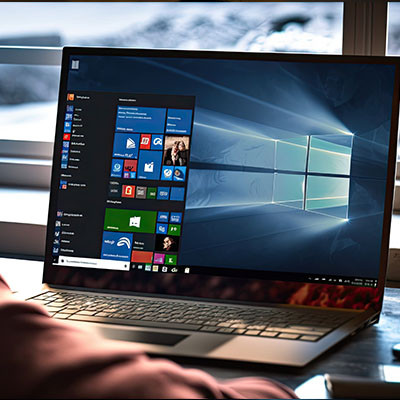Master Solutions Blog
Technology has evolved from a backend function to a critical force that drives business success, security, and competitiveness. Yet many businesses still take a “wait until it breaks” approach to IT, only addressing issues when something goes wrong. The truth is, aging technology can silently chip away at your bottom line—long before anything fully breaks.
Your Point of Sale (POS) system is the backbone of your business, handling transactions, tracking sales, and keeping everything running smoothly. But like any technology, it can become outdated or start causing headaches. If you’re wondering whether it’s time for an upgrade, here are five major signs to look out for.
We all know that person with an ancient laptop, a stubborn printer, or that phone they refuse to part with. At some point, however, that beloved device stops being the sidekick you need it to be and starts feeling more like dead weight. If your tech is making life harder instead of easier, it might be time for an upgrade. Here’s how to know when to let go.
Long story short: it depends.
As unhelpful as that answer may seem on the surface, it really is the truth. There are just so many variables that different businesses will exhibit that ultimately impact how their budgets should be shaped. For instance, both a small mom-and-pop shop and a massive corporation need cybersecurity, but the scale of their respective investments will vastly differ.
Let’s go over how to budget appropriately for your cybersecurity protections and concerns.
Later this year, Windows 10 will no longer be supported—October 15, if you want to be exact. Are you taking steps to ensure you’re upgrading away from Windows 10? If not, you might want to get on that… and consider upgrading away from Office, while you’re at it, since Microsoft is pulling support for that around the same time, too.
Each new year is an opportunity to reflect on what your business has gotten right and what it needs to improve. Your technology is one of those parts of a business where there’s always some room for improvement. If new IT solutions are on the docket for the upcoming year, here are four questions you can ask to make any new implementation successful.
No one likes a slow, glitchy computer. Sometimes, though, these issues aren’t just random annoyances—they could be signs that your computer’s hardware is starting to fail. Here are some warning signs to look for and why they matter.
You may not understand just how crucial keeping your business’ technology up to date is, but it can be the best defense at battling some extraordinary downtime that can not only cost you quite a bit, but also frustrate your staff to the point where it becomes a whole other problem for your business. This month, we discuss a five-year plan for your business’ hardware and why it is a solid practice to stay ahead of many of the technology problems businesses face.
Ideally, your business will last for years and years, but your information technology will simply not be able to do the same. This makes it essential to rework and update your business’ IT regularly. Let’s discuss a few warning signs that you need to pay attention to so you know when to do so.
Communications are incredibly important for businesses, but it’s easy to let the other parts of your technology infrastructure take priority. One of the greatest ways businesses can prioritize communications and cut costs is by implementing a VoIP ( Voice over Internet Protocol) system. With the right setup, your business can revolutionize its telephony system and streamline communications across your organization.
When you ask a managed service provider or other technology expert when you should be upgrading your technology, you’ll likely get a pretty nebulous answer like, “it depends.” That’s because there isn’t necessarily a hard or steadfast response to this question, and the answer will change depending on various factors that are inconsistent across businesses.

















